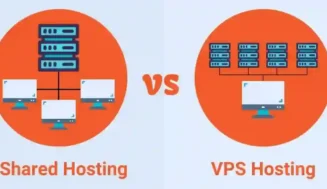Streamlining Operations and Reducing Costs: Maximizing Efficiency for Better Business Performance
In today’s highly competitive business landscape, finding ways to streamline operations and reduce costs has become essential for sustainable growth and long-term success. Every business, regardless of its size or industry, strives to maximize efficiency while minimizing expenses. In this article, we will explore various strategies and practical approaches to achieve cost reduction and streamline operations effectively.
1. The Importance of Streamlining Operations
Streamlining operations is the process of optimizing business workflows and eliminating unnecessary steps or activities that hinder productivity. By streamlining operations, organizations can reduce costs, enhance productivity, and achieve better overall performance. Efficient operations lead to shorter cycle times, improved customer satisfaction, and increased profitability.
2. Identifying Inefficiencies and Bottlenecks
Before streamlining operations, it is crucial to identify inefficiencies and bottlenecks within your business processes. Conduct a thorough analysis of each department and identify areas where tasks take longer than necessary, redundant processes exist, or information flow is disrupted. This assessment helps pinpoint the areas that require improvement and provides a roadmap for streamlining operations.
3. Implementing Process Automation
Process automation plays a vital role in streamlining operations. It involves leveraging technology to automate repetitive tasks, reduce manual errors, and improve efficiency. By automating routine processes, such as data entry, document management, and inventory tracking, businesses can free up valuable time for employees to focus on higher-value tasks and strategic initiatives.
4. Optimizing Supply Chain Management
Effective supply chain management is essential for cost reduction and streamlined operations. Analyze your supply chain processes to identify areas where delays, inventory inefficiencies, or excessive transportation costs occur. Collaborate with suppliers and implement strategies like just-in-time inventory management, demand forecasting, and efficient logistics to optimize your supply chain and reduce costs.
5. Embracing Technology for Efficiency Gains
Leveraging technology can significantly enhance operational efficiency. Invest in modern software solutions, such as enterprise resource planning (ERP) systems, customer relationship management (CRM) software, and project management tools. These tools centralize data, improve collaboration, and provide real-time insights, enabling businesses to make informed decisions and streamline their operations effectively.
6. Outsourcing and Resource Allocation
Outsourcing non-core functions can be a cost-effective strategy to streamline operations. Evaluate tasks that can be efficiently handled by external service providers, such as accounting, IT support, or customer service. By outsourcing these functions, businesses can reduce operational costs, tap into specialized expertise, and allocate internal resources to core activities, driving efficiency and overall cost reduction.
7. Effective Inventory Management
Proper inventory management is crucial for reducing costs and streamlining operations. Excess inventory ties up valuable capital and incurs carrying costs, while insufficient inventory leads to stockouts and missed sales opportunities. Adopting inventory management techniques like just-in-time (JIT) inventory, ABC analysis, and regular demand forecasting helps optimize inventory levels, reduce storage costs, and improve order fulfillment efficiency.
8. Lean Methodology and Waste Reduction
Implementing lean methodology is an effective approach to streamline operations and reduce waste. Lean focuses on identifying and eliminating non-value-added activities, defects, overproduction, waiting time, excessive motion, and excess inventory. By adopting lean principles and encouraging a culture of continuous improvement, businesses can eliminate waste, enhance efficiency, and achieve significant cost reductions.
9. Employee Training and Skill Development
Investing in employee training and skill development is essential for streamlining operations. Well-trained employees are more proficient in their tasks, make fewer errors, and contribute to overall operational efficiency. Provide regular training programs to enhance technical skills, promote cross-functional knowledge, and empower employees to take ownership of their work processes, leading to improved productivity and cost reduction.
10. Continuous Improvement and Kaizen Philosophy
To sustain streamlined operations and cost reduction efforts, organizations should embrace a culture of continuous improvement. Adopt the Kaizen philosophy, which encourages small, incremental changes to processes over time. Regularly review performance metrics, solicit feedback from employees, and implement improvement initiatives. Continuous improvement ensures that operations remain optimized and adaptable to changing business environments.
Conclusion
Streamlining operations and reducing costs are paramount for businesses aiming to thrive in today’s competitive landscape. By implementing the strategies discussed in this article, such as identifying inefficiencies, embracing technology, optimizing supply chains, and fostering a culture of continuous improvement, organizations can unlock efficiency gains, boost productivity, and achieve sustainable cost reduction. By streamlining operations, businesses can maximize their potential and position themselves for long-term success.
FAQs (Frequently Asked Questions)
Q: How can streamlining operations lead to cost reduction? A: Streamlining operations eliminates inefficiencies, reduces wasteful activities, and improves overall productivity, which directly contributes to cost reduction.
Q: What are the benefits of process automation in cost reduction? A: Process automation minimizes manual errors, saves time, and enables employees to focus on higher-value tasks, resulting in improved efficiency and reduced costs.
Q: How does effective supply chain management contribute to cost reduction? A: Optimized supply chain management reduces delays, inventory costs, and transportation expenses, resulting in overall cost reduction and improved operational efficiency.
Q: What role does technology play in streamlining operations? A: Technology enables centralization of data, improves collaboration, provides real-time insights, and automates routine tasks, leading to enhanced operational efficiency and cost reduction.
Q: Why is continuous improvement important for streamlined operations? A: Continuous improvement ensures that operations remain optimized and adaptable, allowing businesses to identify and eliminate inefficiencies for sustained cost reduction and improved performance.
In conclusion, by implementing effective strategies such as process automation, supply chain optimization, technology adoption, and continuous improvement, businesses can streamline operations, reduce costs, and achieve enhanced efficiency. By embracing these approaches, organizations can position themselves for success in today’s competitive landscape while maximizing their profitability and delivering value to their customers.







